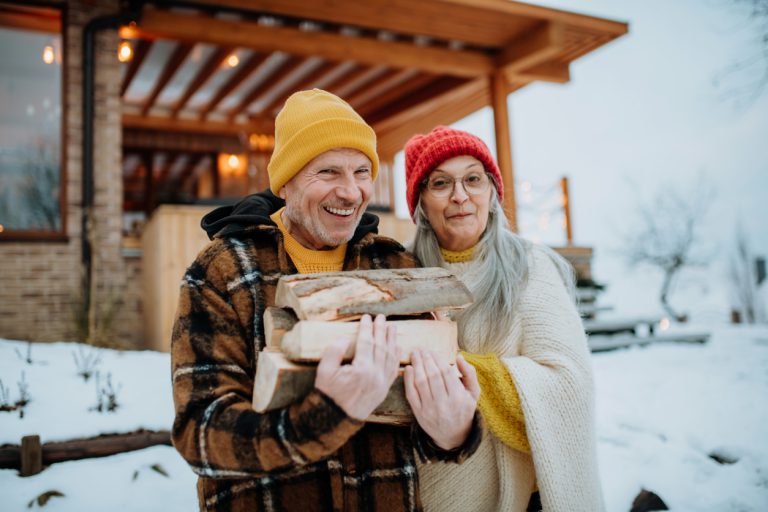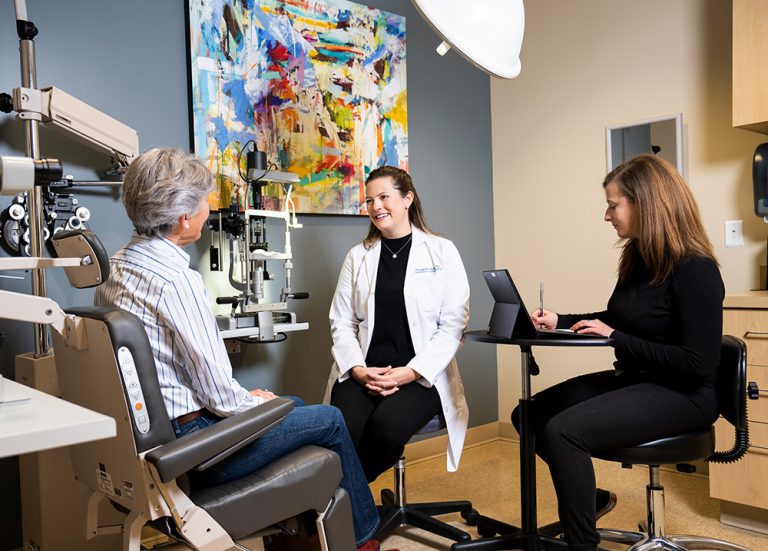It’s the Virus’s World: The Balancing Act of Reopening Colorado Without Widespread Testing
This article and photos first appeared in the Denver Post on April 22, 2020
Since the novel coronavirus first entered the state last month, Colorado’s top health officials have spoken repeatedly about the need for more extensive testing, particularly as a way to measure how the virus is spreading after the statewide stay-at-home eases and people return to businesses and a modified version of normal life.
Gov. Jared Polis has routinely expressed his frustration at the lack of extensive testing, a problem that has impacted every state in the country as supply chains can’t keep up, forcing states to compete with each other for resources.
But as the governor’s stay-at-home mandate was set to end Sunday, he had a calculation to make. The science is clear, public health experts say: Widespread testing, combined with strategic and targeted isolation and quarantines, is the ideal way to track hot spots and outbreaks before they overwhelm hospitals, while simultaneously allowing others to return, at least partially, to daily life.
That testing simply hasn’t come. And Polis chose not to wait any longer.
“There’s the best way to do this and then there’s the way we’re gonna have to do this,” said Daniel Goldberg, an associate professor of epidemiology at the Colorado School of Public Health. “There’s not an ideal way. It’s not our world — it’s the virus’s world.”
The governor’s announcement Monday to reopen some businesses next week and allow some offices to return to half-capacity the following week underscores the immensely difficult, life-and-death decisions being made by state executives around the country, as a lack of resources has forced them to take calculated risks with both their economies and people’s well-being.
Why testing matters
Public health experts say 152 tests per 100,000 people each day is the gold standard for community-wide testing in order to safely lift restrictions such as stay-at-home orders. This number allows public health officials to identify both those who are sick and those who are asymptomatic to avoid outbreaks and isolate the right people so others can continue living their lives.
Colorado is currently testing 26.5 people per 100,000 residents, according to the most recent data from the state health department. Rhode Island was the only state to reach the recommended rates when The New York Times analyzed states’ data last week.
The ability for public health officials to accurately track the disease is paramount to controlling its effect on a population, experts say. In South Korea and Germany, between 3% and 7% of tests come back positive, meaning officials have a good sense of who has the virus and where they live.
In the United States, 20% of those tested come back positive, indicating there are countless more untested living with COVID-19. Nineteen percent of the 1,548 new tests reported to Colorado health officials Monday came back positive, according to state data. In Colorado, 10,477 people have tested positive — but state officials say they believe as many as 75,000 are infected.
The World Health Organization recommends 10% as the maximum rate of positive tests.
Officials in Eagle County, meanwhile, say initial testing there likely saved lives, and that has one of Colorado’s hardest-hit communities on the upswing.
“We literally have one active COVID-19 patient in our hospital right now,” Will Cook, president and CEO of Vail Health, wrote Monday on the hospital’s website.
Doctors have not had to place a patient on a ventilator since March 27, while positive COVID-19 tests have dropped to 7% from 35%, Cook wrote. Nurses are even being sent to Denver, where there’s more need.
“We’ve already tested nearly 5% of our valley population, which is 2-to-10 times higher than most communities,” Cook said. “Instead of following CDC restricted testing guidance, which limited testing to those who recently traveled to China, we assumed COVID was here early in January due to our international travel. This decision allowed us to move into action before we were told to. We continue to test more aggressively and broadly than any community in America.”
As a result of this success, Eagle County officials have petitioned Polis to ease some the stay-at-home restrictions so business in the mountain community can restart.

Moving forward despite lack of testing
But for many Colorado communities, that level of testing is not possible. And Polis decided he won’t wait for that to change.
“First of all, testing is great,” Polis said at a news conference Monday, responding to a question about moving forward with easing restrictions despite not having these resources in place. “But even if we had all the testing, we wouldn’t have ability to follow up from a contact-tracing perspective, a quarantine perspective — or even a fraction of that.”
Polis acknowledged Monday that more testing would help speed things along and move up dates on reopening certain segments of society — but unlike island nations such as Taiwan or New Zealand, the virus would always find its way back.
In recent days, the governor made clear that a lack of widespread testing alone would not stop him from reopening parts of the state.
On Friday, Polis pointedly refuted a comment made the previous day by Scott Bookman, the state’s COVID-19 incident commander, who told reporters, “The state won’t reopen until we have the capacity to make everyone safe.”
“If any state, if any country, were to wait until we could keep everybody safe,” Polis said, “we’d have to be closed forever.”
The decision to reopen comes as unemployment filings reached historic numbers in Colorado, and protesters on Sunday descended on the state Capitol, demanding an end to what they called “draconian” policies.
The move to ease restrictions despite not having the ideal tracking system in place is like trying to choose between two nightmares, said Lee Newman, an epidemiology professor at the Colorado School of Public Health.
“One nightmare is continuing to have people out of work, more people to file for unemployment benefits and more people suffering because of the stay-at-home requirement,” Newman said. “The other nightmare: Go back to work and your workplace has an outbreak and that affects you, it affects the people you go home to, it affects your coworkers. And it probably results in a relapse for the community in terms of increased cases and deaths.”
Polis has reiterated that the stay-at-home order is not sustainable in the long run, and that people would need to find some semblance of normal life, even as the virus stays in their midst for months to come.

Risking another spike
In lieu of widespread testing and tracking, health officials are going to have to watch the virus without the best indicators available — noting that the risks for another COVID-19 spike are very possible.
In a letter to Polis last week, a consortium of local public health officials recommended that in order to safely relax restrictions on people’s movements and work, Colorado should be sure that every symptomatic person can be tested for COVID-19 within 24 hours and see test results within 12 to 24 hours. It also suggests employers be required to screen employees daily for COVID-19 symptoms and that face masks should be encouraged or mandated for some time.
Without widespread testing, health officials have to rely on blunt tools such as stay-at-home measures, social distancing and — later in the illness’ cycle — ICU beds and ventilators.
“That’s not your first line of defense,” Liane Jollon, president of the Colorado Association of Local Public Health Officials, said Tuesday. “The first line of defense is controlling a disease, and you control it through adequate testing.”
As social distancing measures are relaxed in the coming weeks, the possibility of a resurgence in the disease cannot be discounted, experts say.
If the state keeps social interactions to 65% less than normal — the level Polis is shooting for — and took no other precautions, the number of people needing intensive care beds would exceed the number available in late July or August, the Colorado Department of Public Health and Environment and Colorado School of Public Health predicted in a new modeling report released Monday.
The model predicted the most likely way to avoid overwhelming intensive care units at that lower level of social distancing is if older people continue following the stay-at-home order; almost everyone wears a mask in public; and the state develops the ability to quickly test people with symptoms and isolate those who have the virus.
Even then, the virus could come roaring back if restrictions are further eased in June, according to the predictions.
“The more social distancing is relaxed, the sooner we can expect a second peak to occur and hospital capacity approached and possibly exceeded,” researchers noted. “In addition, the more social distancing is relaxed, the greater the hospital demand at the peak.”
Even if older people stay home, people wear masks and testing increases, it won’t matter if social distancing drops to 45%, the health experts warned in the report.
“In the absence of testing and tracing, the odds of these rolling reopenings and retightenings goes up substantially,” said Goldberg, with the Colorado School of Public Health. “What the governor is trying to do is buy time, keep as many of us as safe as possible, acknowledging that as safe as we can be isn’t as safe as we’d like to be.”


